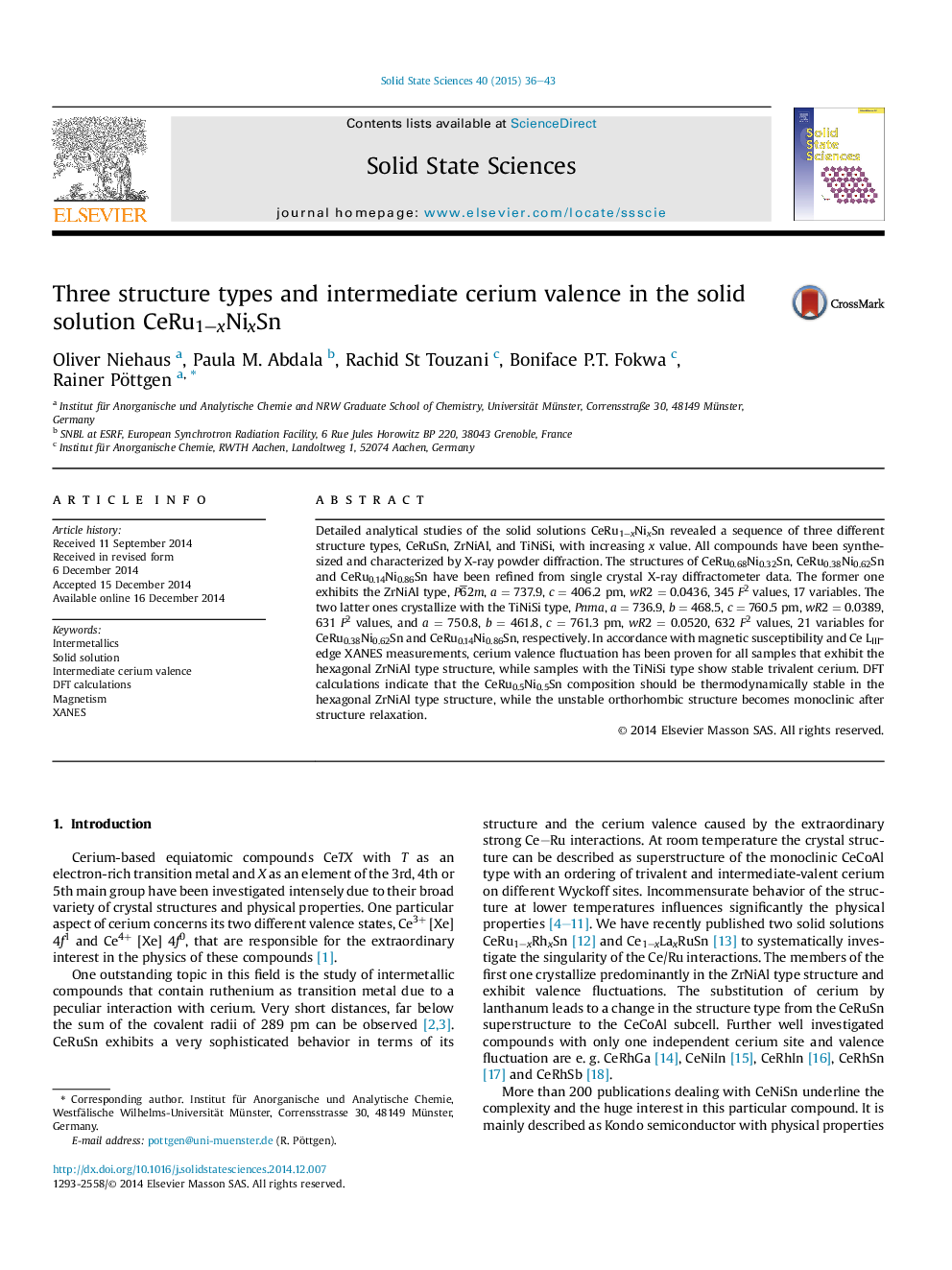| Article ID | Journal | Published Year | Pages | File Type |
|---|---|---|---|---|
| 1504264 | Solid State Sciences | 2015 | 8 Pages |
•Synthesis of the solid solution CeRu1–xNixSn.•CeRuSn, TiNiSi and ZrNiAl type structures as a function of the Ru/Ni substitution.•Switch from intermediate cerium valence to trivalent cerium.•Magnetic properties and XANES spectroscopy.•DFT calculations.
Detailed analytical studies of the solid solutions CeRu1–xNixSn revealed a sequence of three different structure types, CeRuSn, ZrNiAl, and TiNiSi, with increasing x value. All compounds have been synthesized and characterized by X-ray powder diffraction. The structures of CeRu0.68Ni0.32Sn, CeRu0.38Ni0.62Sn and CeRu0.14Ni0.86Sn have been refined from single crystal X-ray diffractometer data. The former one exhibits the ZrNiAl type, P 6¯2m, a = 737.9, c = 406.2 pm, wR2 = 0.0436, 345 F2 values, 17 variables. The two latter ones crystallize with the TiNiSi type, Pnma, a = 736.9, b = 468.5, c = 760.5 pm, wR2 = 0.0389, 631 F2 values, and a = 750.8, b = 461.8, c = 761.3 pm, wR2 = 0.0520, 632 F2 values, 21 variables for CeRu0.38Ni0.62Sn and CeRu0.14Ni0.86Sn, respectively. In accordance with magnetic susceptibility and Ce LIII-edge XANES measurements, cerium valence fluctuation has been proven for all samples that exhibit the hexagonal ZrNiAl type structure, while samples with the TiNiSi type show stable trivalent cerium. DFT calculations indicate that the CeRu0.5Ni0.5Sn composition should be thermodynamically stable in the hexagonal ZrNiAl type structure, while the unstable orthorhombic structure becomes monoclinic after structure relaxation.
Graphical abstractFigure optionsDownload full-size imageDownload as PowerPoint slide
